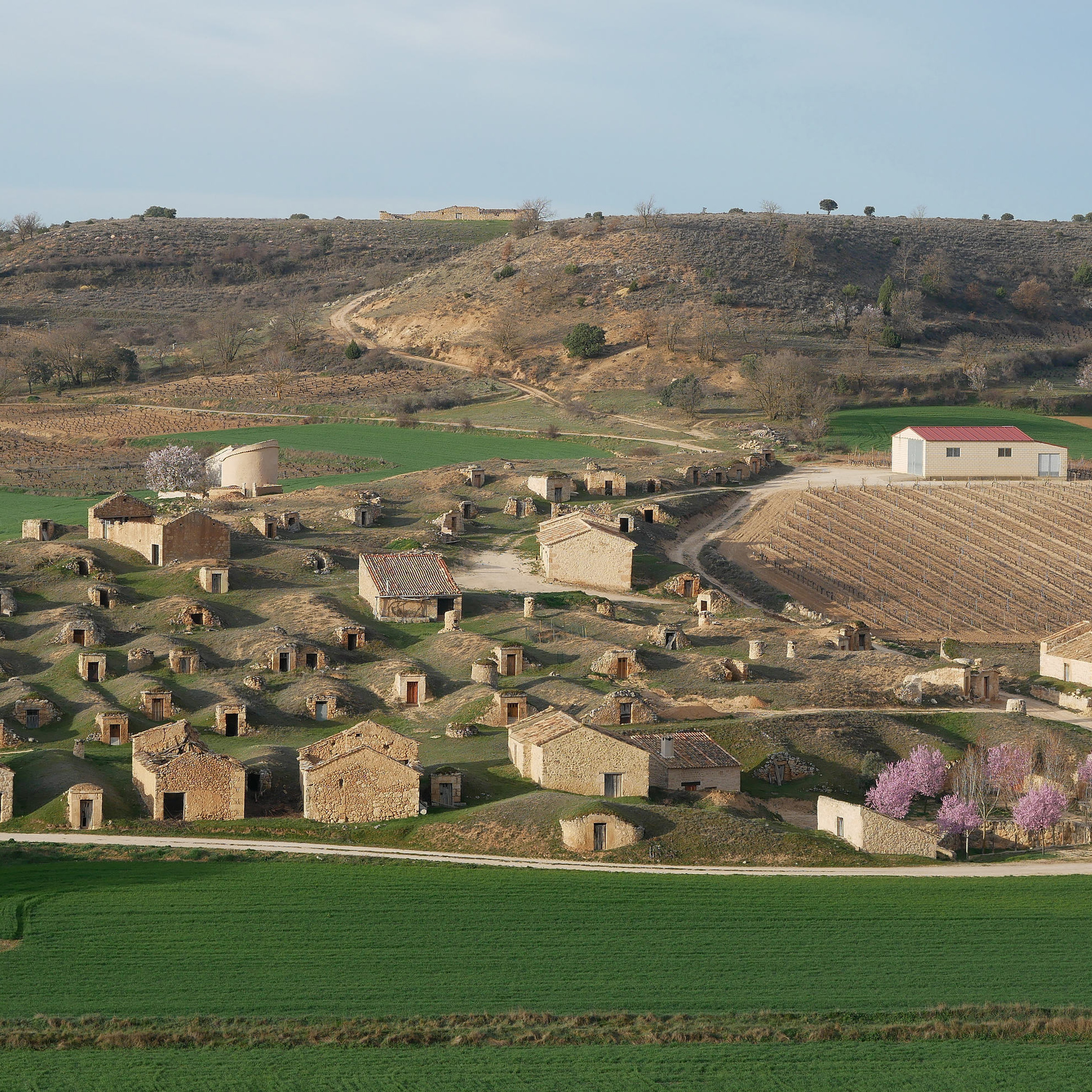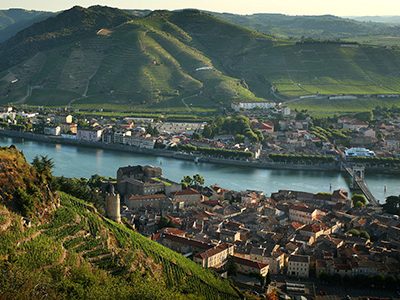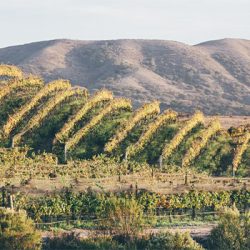Built on top of a limestone cliff, the town of Atauta rises like a fortress above the rugged hills of Soria. The houses lining either side of the narrow streets are constructed with that pale limestone rock. Vineyards extend across the valley below, surrounding the Barrio de las Bodegas near the base of the cliff. This “cellar district” rises up a hill, with dozens of small buildings, each housing aging cellars, which are slowly being restored by Atauta’s current residents, a population hovering around 60 people.
“Soria in general, and Atauta in particular, are the gateway to the Ribera del Duero,” says Bertrand Sourdais, a Frenchman who produces wines in Chinon at Domaine de Pallus. In 2000, he was hired as the founding winemaker at Dominio de Atauta, a winery that has since built a legend in Ribera del Duero.
Sourdais is enchanted by Soria, the far eastern province of Ribera del Duero where the river’s headwaters descend from the hills. As we drive through the abandoned Barrio de las Bodegas, he describes the region’s cold climate, sandwiched between two mountain ranges that funnel the cold wind from passes in the high ridges. He also speaks of the altitude of the vineyards, 1,000 to 1,300 feet higher than those of the province of Valladolid, at the western end of the appellation. The altitude creates a brutal difference between day and night temperatures. “With this climate and with these heights above 3,000 feet, we maintain the acidity and freshness in our grapes. When I started showing the first Dominio de Atauta wines, people did not believe that they were made with grapes from Ribera del Duero,” Sourdais says, laughing out loud.
The old bodegas at el barrio recall a time when the region bustled with activity, before locals started to migrate to bigger cities after the Spanish Civil War. “In the past, when people from other mountain towns could not have wine because their grapes did not ripen, it was customary for them to come here to buy,” says Sourdais. “They came with their donkeys and their pots, drank and got drunk, and the next day they returned to their villages laden with wine.”
Today, according to figures from the Consejo Regulador, there are only about 3,000 acres planted in Soria; Burgos has 42,000 planted acres and Valladolid has 12,000. But the difference is in the vine age: In Burgos, 28,000 of those acres were planted less than 30 years ago; in Valladolid, around 11,000 acres are less than 30 years old. In Soria, almost half the vines are very old, some more than 80 years old, planted after phylloxera, and some much older, nearing two hundred years of age.
For centuries, throughout Ribera del Duero, people raised livestock and grew vegetables on small family farms. If the weather allowed, they also tended vineyards. Whatever surplus they might have had, they sold. “The problem is that, in the last fifty years, everything has been distorted,” Sourdais says as we drive to one of his vineyards. “Everything is about production, everything is a race to see who produces more bottles, who invoices more. One of the things I like about Soria is that this race never came here.” As his voice rises with passion, his French accent becomes more evident, then he calms down and breaks into a smile.
It is, perhaps, because Soria is remote, far to the east, that it never joined that race. At the same time, few of the Soria wines are part of the contemporary Ribera del Duero conversation. Some producers here edge toward extraction, or a significant presence of wood, though most all of the wines share the seal of Soria and its high-altitude vineyards, a chorus of fresh fruits amplified by the winds that race over the mountains. Still, none of the region’s wines approach the clarity achieved at Dominio de Atauta or at the two new projects from Sourdais.
When Dominio de Atauta reorganized during the economic crisis in 2009, Sourdais set out on his own. Today he has a winery on the outskirts of Atauta, in an old industrial district where he produces two lines of wines. With Antídoto, he aims to show a panorama of Soria’s terroir, purchasing grapes from throughout the province to make the wines. For Dominio de Es, he focuses on Atauta and its patrimony of pre-phylloxera vineyards.
“With this climate and with these heights above 3,000 feet, we maintain the acidity and freshness in our grapes.”
— Bertrand Sourdais, Dominio de ES
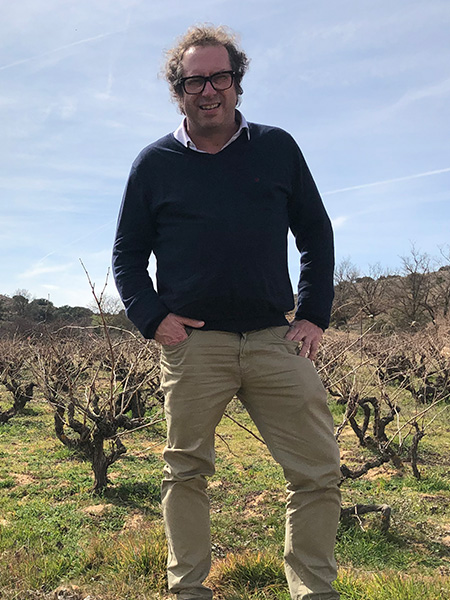

As we arrive at one of those vineyards, Sourdais talks about the importance of all these ancient parcels. “We have the privilege of cultivating a pinch of what is left of Spain’s historical viticulture,” he says, opening the deer fence to La Diva.
La Diva in March is only bare vines, all different sizes and shapes, extending their arms towards the late winter sun. Their roots descend through a thin layer of clay and sandy soil into limestone bedrock. “Of course, the man who planted this vineyard and made wine with it was concerned about production,” Sourdais admits, “but he also wanted to have a good wine to drink. I can’t imagine someone happy because their wine tastes like water.
It is probable that the first owner of La Diva, and later his children and grandchildren, used those grapes to make clarete, the light and refreshing traditional local red. The wine that Sourdais produces with this vineyard is different.
Back in the winery, we taste the Dominio de Es La Diva, a wine dominated by the calcareous sensation of its soils—the austere structure of fruit grown in limestone—delicious and fresh. As I drink it, I wonder what the original vineyard owner would have thought about this wine. Perhaps it would have seemed very heavy to him; perhaps he would have been surprised by the intense color. But he would not have been surprised by the firm texture and the sharp acidity, details that were surely in his clarete
Sourdais’s wines have earned acclaim not only for their depth of flavor, but also for their freshness. And, at least in part, for his efforts to rescue the heritage of Soria’s old vineyards. “This is our treasure,” he says.
Jaime Suarez, the current winemaker at Dominio de Atauta, shares that same sense of mission. “We have a responsibility that goes beyond obtaining quality from these grapes,” he says as we look out from the winery’s high perch, taking in the valley below with its vineyards, walnut trees and oaks. “What we do is preserve this heritage.
Dominio de Atauta controls about 111 of the 148 acres of vines currently farmed in Atauta. But those acres are not orderly or continuous parcels as you would see on either side of the golden mile in Valladolid. In Soria, the locals speak of trozos (pieces)—small plots scattered among the hills, often with only a few hundred plants. Dominio de Atauta’s holdings are divided into 600 trozos
Suarez has continued the research into Atauta’s terroir that Sourdais began 20 years ago. Today, he makes one wine, Parada de Atauta, from parcels on sandy soil without clay, mostly planted after phylloxera, about 90 years ago. “What sand gives me is softness, elegance and delicacy,” Suarez says. He reserves the Dominio de Atauta label for his older vineyards, all pre-phylloxera, on soils with more clay. Suarez finds that vines in the clay soils give wines with a wider, broader mouthfeel. He also uses that label for five single-vineyard wines, all from small plots, such as La Mala, a parcel with 2,500 vines
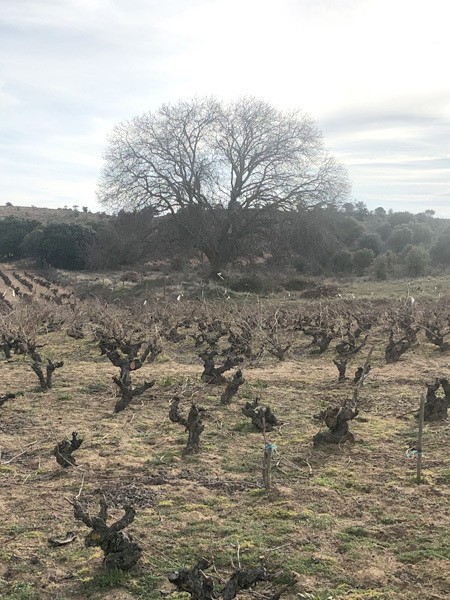

“This vineyard is known as the bad one, because it produced very little, but it has still survived,” Suarez tells me later as we walk through the vines at La Mala. The site faces north, into the cold, the soils mainly sand and some clay, all above the limestone rock that supports the roots of those ancient vines. Back at the winery, when we taste La Mala 2013, it parallels the sensations of La Diva from Dominio de Es: La Mala is pure tension and red fruits, with firm and penetrating acidity. I imagine the original owner of this vineyard and how upset he might have been by the few grapes the vines would yield, but how happy for the small amount of delicious clarete that the vineyard gave him. “Why should we rip it out?” the grower might have asked, as did his children and all his descendants who, for generations, came down from the town of Atauta to harvest those grapes.
is the author of Descorchados, an annual guide to the wines of South America, and covers Chile for W&S.
This story appears in the print issue
of June 2020.
Like what you read? Subscribe
today.

